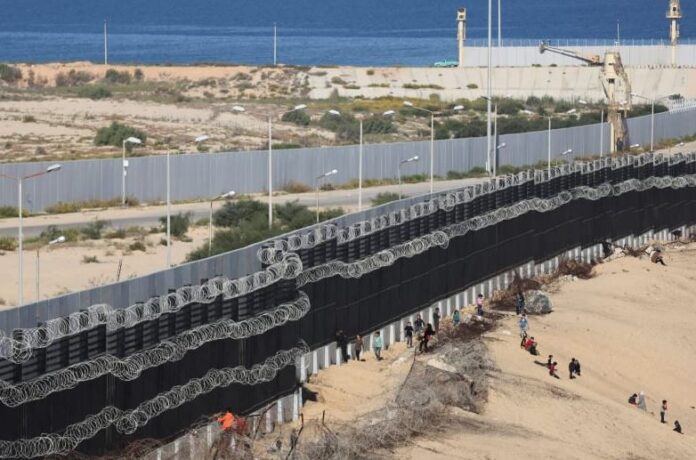JERUSALEM — An Israeli official disclosed on Sunday that Israeli forces have started withdrawing from the Netzarim corridor in Gaza, a move stipulated under a 42-day ceasefire agreement with Hamas. The corridor, which splits northern Gaza from the south, has been a focal point of the conflict since the onset of hostilities.
The official, speaking under condition of anonymity due to unauthorized disclosure of troop movements, confirmed that the withdrawal is part of Israel’s commitments to the truce. This action coincides with the beginning of the ceasefire where Israel has allowed Palestinians to travel through Netzarim to return to their homes in the northern part of Gaza, which has seen significant damage due to the conflict.
Also Read: Thailand Welcomes Back Five Citizens Held by Hamas for 15 Months
The extent of the military withdrawal on Sunday remains unclear. The ceasefire, which is now just past its midpoint, was agreed upon to include the release of hostages by Hamas in exchange for Palestinian prisoners, humanitarian aid influx, and a cessation of hostilities. However, the agreement’s continuation beyond the 42 days remains uncertain as negotiations for an extension, linked to further hostage releases, have not shown significant progress.
Israeli Prime Minister Benjamin Netanyahu is set to dispatch a delegation to Qatar, a pivotal mediator in these talks. However, the low-level nature of the delegation has raised doubts about the likelihood of a breakthrough in truce extension discussions. Netanyahu is also expected to hold a Cabinet meeting to discuss the next phase of the ceasefire, though no specific timeline has been set.
The first phase of the ceasefire has seen the gradual release of 33 Israeli hostages captured during Hamas’s attack on October 7, 2023. In return, Israel has agreed to release hundreds of Palestinian prisoners, provide humanitarian aid, and allow free movement on certain routes without inspection by Israeli forces from the 22nd day of the truce, which was Sunday.
The second phase of the agreement is anticipated to involve the release of all remaining hostages in exchange for a complete withdrawal of Israeli forces from Gaza and the establishment of a “sustainable calm.”
Meanwhile, the future of the U.N. agency for Palestinian Refugees looks grim, according to UNRWA Commissioner-General Philippe Lazzarini, amidst ongoing challenges and funding concerns.
Key Points:
Israeli Withdrawal from Netzarim Corridor: Israeli forces have begun pulling back from the Netzarim corridor in Gaza, as part of a ceasefire agreement with Hamas.
Ceasefire Details: The ceasefire is set for 42 days, currently halfway through, allowing Palestinians to cross the corridor to return home in northern Gaza.
Hostage Exchanges: During the first phase of the ceasefire, Hamas is releasing 33 Israeli hostages in exchange for Palestinian prisoners, humanitarian aid, and a pause in fighting.
Uncertain Extension: There’s uncertainty about extending the truce, with negotiations for further releases and peace terms showing little progress.
Second Phase: The next phase of the ceasefire would involve the release of all remaining hostages for a complete Israeli withdrawal from Gaza and a “sustainable calm.”
Diplomatic Movements: Israeli PM Netanyahu is sending a delegation to Qatar for truce talks, but with low-level officials, suggesting limited expectations for immediate breakthroughs.
UNRWA’s Future: The UN agency for Palestinian refugees faces a challenging future according to its head, amid ongoing regional instability.
Netanyahu’s Strategy: A cabinet meeting is planned to discuss the second phase, but timing remains unspecified.



